Vitality!
Västerås (SE) - Winner

From left to right: Katharina Ipsen, Tecla Spruit, Wolfram Schuh, Cécile Kermaïdic, Pino Heye
TEAM DATA
Associates: Katharina Ipsen (DE) – architect, Tecla Spruit (NL) – anthropologist, Wolfram Schuh (DE), Cécile Kermaïdic (FR) – students in architecture, Pino Heye (DE) – student in urban planning
0049 157 847 555 82
eutierriaworkshop@gmail.com / emergentlab.eu
See the complete listing of portraits here
See the site here
TEAM PORTRAIT
VIDEO (by the team)
INTERVIEW
Click on the images to enlarge
1. How did you form the team for the competition?
The team was initially formed in March 2021. Some members had already known each other through university projects or personal relationships. Others have never had the opportunity to meet in person, a long-awaited step, which will finally take place during the presentation of our project in 2022.
2. How do you define the main issue of your project, and how did you answer on this session main topic, Living cities?
Vitality! provides a metabolic strategy for the diverse and inclusive transformation of Västerås. We developed it for water, green and social actions with a special emphasis on the purification of the lake water and the ecology of the site.
The first series of interventions will take place on Lake Mälaren before weaving further into the fabric of the future development site. This multi-layered approach will help build an inclusive and resilient community for tomorrow's challenges by enabling democratic citizen participation processes through thematic gatherings, events and workshops in pavilions carefully placed around the site. Groups and individuals will form associations to transform the water system as caretakers of the infrastructures. They will work on site, planting and maintaining the vegetation in the harbour area to improve biodiversity and water quality.
Since the issue “Living Cities” requires a creative, self-sustaining, and self-reinforcing process over time, it is this aspect of development, in and through time, that we have decided to focus on in a transdisciplinary way. Each member initially worked in their own area of expertise. Through our collaboration, we developed the solutions from each perspective to collaboratively create the project submitted to the Europan jury.
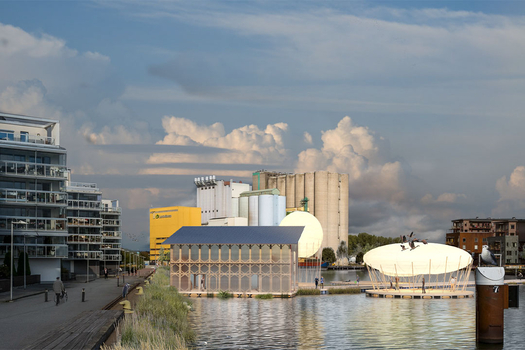
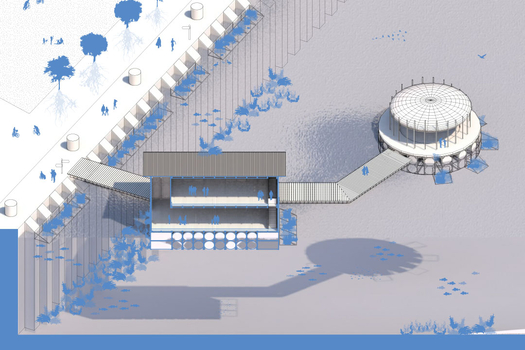
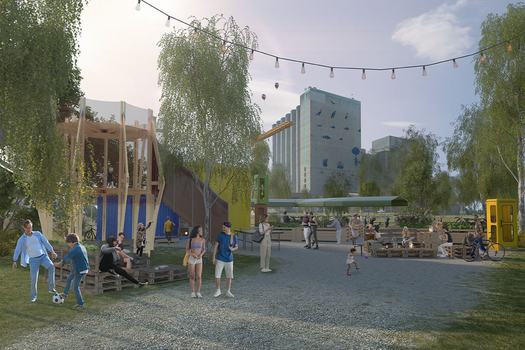
The project places itself as a meeting place for all entities involved. We created a strategy with respect to all actors involved, human beings, animals, places, and objects involved in the ongoing process, to establish a metabolic community in space and time.
Thus, by providing the necessary tools, we enable the citizens of Västerås to develop a community-driven circular approach, based on our understanding of the value of the city's historical past. By respecting the heritage and the inhabitants and by envisioning a living evolution over time, we see ourselves as the curators of the transformation process.
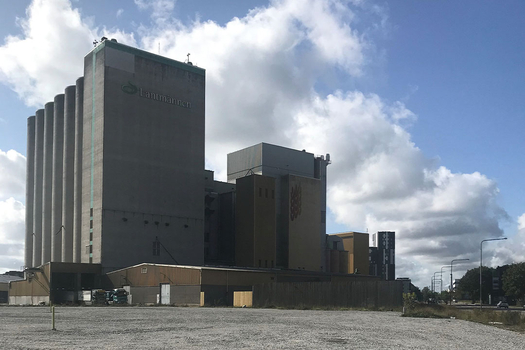
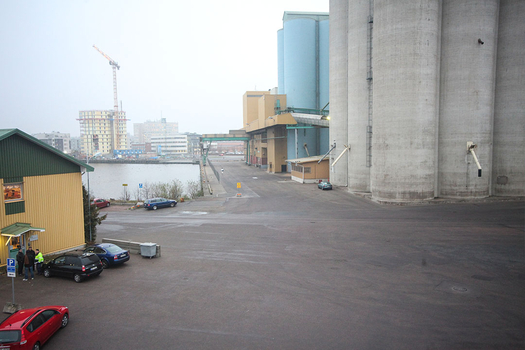
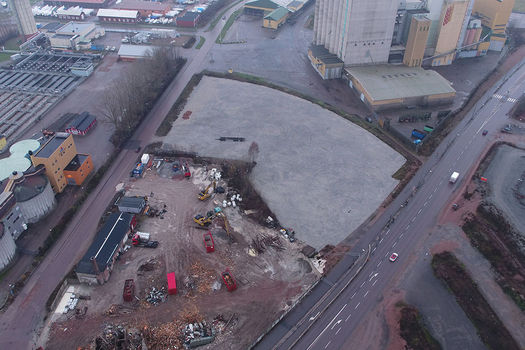
In different ways, every member of the team has dealt with this issue before the formation of the group. Here is a list of projects followed by a short description:
- Redesign the landscape through keystone species, Cécile Kermaïdic. Territorial reconfiguration of a rural area in Bleesbruck in the North-East of the Grand Duchy of Luxembourg. Reintroduction of the wolf and the beaver, key animal species in the ecological balance of the forest and the river, used as strategic tools of mutation and design of the territory.
- Analysis of Tokyo's Shōtengai cultural centers, Pino Heye. The history of Shōtengai and their development over time was analysed, to develop an understanding for their way architecture shapes commercial and cultural practices.
- The Perivállonistic Manifesto, Wolfram Schuh with Freya Probst, Tim Keim, Julia Wolf and Joris Allemann. Theoretical framework for a new, global way of thinking and living in harmony with nature to sustain existing and future generations, as well as other species on the planet and a plan for the practical implementation in the existing urban context.
- Diverse and inclusive faculty project, Tecla Spruit. Establishing at and through the POPcorner FSW - Office for Diversity, Inclusion and Excellence at Leiden University a stronger equal opportunities system, for study-success and connecting, and for an inclusive and safe learning space for all students, regardless of their background
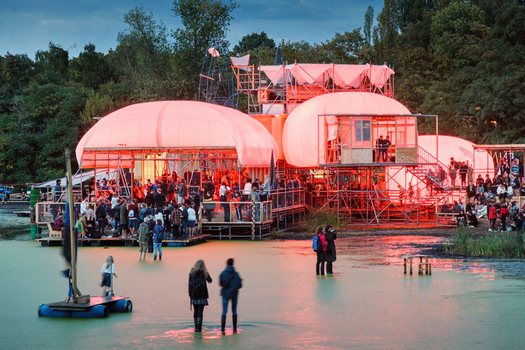
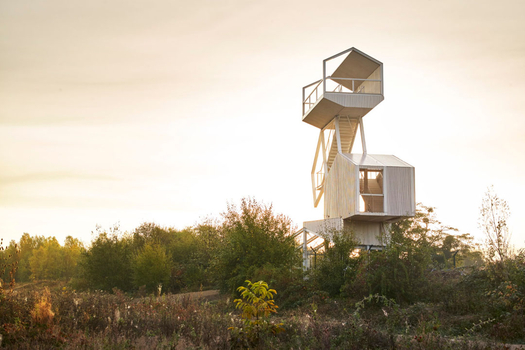
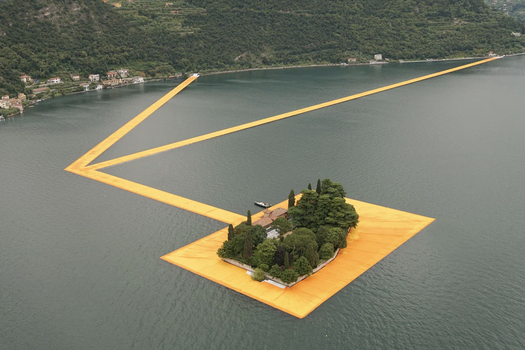
It was clear from the beginning that the strategy for Europan could only be socio-culturally sustainable as a process over time. We needed a flexible plan that was not fixed, since a strict timeline does not allow for adaptation and changes that might be necessary. Instead, we wanted to create tools that can ensure that every voice is heard - a resilient structure able to co-create a society that can adapt and re-negotiate the needs of all actors. We considered this aspect both in the context of the democratic decision-making process and in the everyday co-habitation in Mälarporten.
We start by addressing concrete problems in order to establish the process of transformation in the community. Afterwards we respond to the socio-cultural aspects of the development of the area. In this way, we establish an adaptable process that can adequately address the unknowns.
As a starting point, we consider the issue of water as a connecting link for all involved. Therefore, the water pavilions will be one of the focal points for the social cohesion and technological development of the region. We intend to make our pavilions platforms for this exploratory research of creating sustainable communities as well as educational tools on issues centered around biodiversity.
6. Is it the first time you have been awarded a prize at Europan? How could this help you in your professional career?
This is our first participation in the Europan competition and our first prize, and we hope that it will be the first of many. This opportunity will allow the team to continue to refine its methodology through the creation of a network linking specialists from different geographical and disciplinary backgrounds. Thus, we are specifically focusing on a transdisciplinary approach. Emerging from this network, we plan to start a studio which will incorporate and coordinate different proposals in the process while taking into account the curation process.
Therefore, the Europan project will be an opportunity to expand our professional network through the projects we will work on in the future.
TEAM IDENTITY
Office: emergent_lab
Function: architecture, urban planning, anthropology
Average age of the associates: 28 years old
Has your team, together or separately, already conceived or implemented some projects and/or won any competition? if yes, which ones?
Europan 16 is our first competition and project as a team, but individually some members of our group have already participated in various competitions, exhibitions and projects in countries such as Germany, France and Denmark. In March 2021, the team conducted Eutierria, an experimental pilot workshop to test the methods we had in mind for our studio.
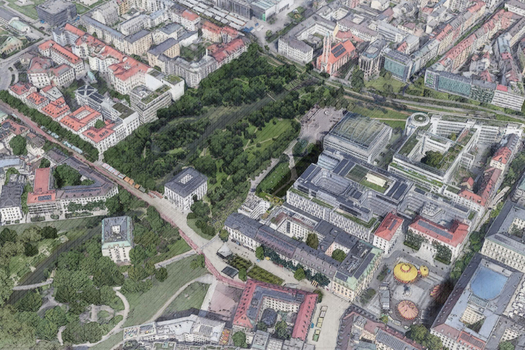
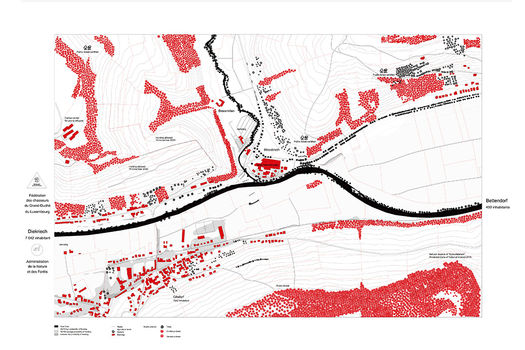
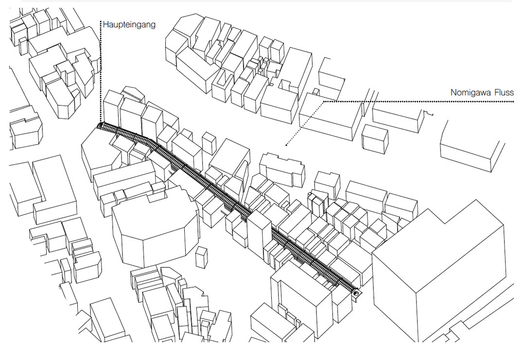
Not yet, we live in different countries and the internet serves as our common workspace. However, we are planning to get a common workplace in Paris soon.











